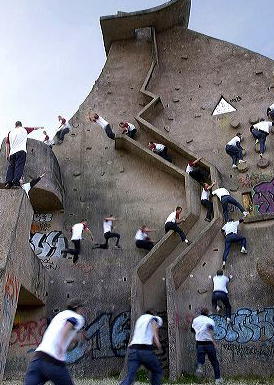What is Lateral Thinking and Do I Need It?
Two of the services we frequently use with our Clients are Idea Generation and Problem Solving.  We approach both challenges with very different, process oriented methods but there is one thing that remains constant – Our ability to think laterally and come up with novel concepts by looking at situations in new and different ways. Many of our Clients are so deeply involved in an issue such as their daily business that they find it hard to change perspective and see things from an alternative angle. This is where we come in… we tend to see things that are ‘outside the box’.
We approach both challenges with very different, process oriented methods but there is one thing that remains constant – Our ability to think laterally and come up with novel concepts by looking at situations in new and different ways. Many of our Clients are so deeply involved in an issue such as their daily business that they find it hard to change perspective and see things from an alternative angle. This is where we come in… we tend to see things that are ‘outside the box’.
Vertical thinking, also known as logical thinking, takes an idea and carries it forward. Lateral thinking, on the other hand, provokes fresh ideas and essentially changes the frame of reference in almost any situation. Vertical thinking tries to overcome problems by dealing with them head-on, lateral thinking attempts to bypass obstacles using a variety of different approaches.
In essence, Lateral thinking is a tool that helps us change our way of thinking about something often by modifying our perceptions.
With logical thinking you start out with certain given components and boundaries wrapped in a process. This is similar to the situation in chess where you start out with specific pieces and are expected to play by the rules. The issue is that in most real life situations, we can not use the chess model or logical thinking to solve problems because you don’t know what the pieces are, what they represent or how many pieces actually exist… knowing the rules is almost irrelevant to solving a problem or generating new ideas.
where you start out with specific pieces and are expected to play by the rules. The issue is that in most real life situations, we can not use the chess model or logical thinking to solve problems because you don’t know what the pieces are, what they represent or how many pieces actually exist… knowing the rules is almost irrelevant to solving a problem or generating new ideas.
Throughout our lives we are handed several different rulebooks (cultural, social, business oriented etc). When we get these rulebooks we just assume that the components that the rulebooks refer to, simply exist and we tend to accept that certain boundaries and limitations are present because they were mentioned in the rulebook. Lateral thinking throws out the rules and assumptions as well as the boundaries and limitations so that we are free of our social, cultural, geographic and demographic bonds.
Lateral thinking focuses on changing some element to enable a new and fresh perspective of a given situation. Lateral thinking deals primarily with perception. By using lateral thinking techniques we can organize the external world into the pieces that we can then process. Perhaps more importantly, by observing lateral thinking in others we can generate new ideas and better understand how they perceive the world around them.
The brain is a self-organizing information system that forms asymmetric patterns. In such systems there is a mathematical need for moving across patterns. The tools and processes of lateral thinking are designed to achieve such lateral movement to accomplish a given result.
A famous person once said that you can’t dig a hole in a different place by digging the same hole deeper. Think about that for a moment… If you were driving in a car on the highway but your intended destination is behind you, driving faster while keeping the car on the same heading will not get you to your intended destination.
If you were to continue thinking about a problem or a solution in a given way, this may not be as useful as changing tact and trying something completely different. Additional effort in the same direction will not necessarily help you get the results you were after but applying some proven tools designed to turn the car around, may offer you options that you never knew existed. It’s a format of thinking ‘out of the box’ and our Clients believe that we are very good at it. It may be because we do it frequently.
If you have a challenging problem or need some new ideas, please, fill out our form and allow us to get in touch with you today.
